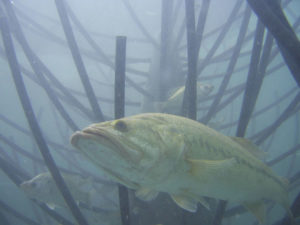 Every angler worth their salt knows that fish loves hiding in rubble and grass. If you know where to find the fish, you can use it to your advantage. But can you find it? And what if there is none?
Every angler worth their salt knows that fish loves hiding in rubble and grass. If you know where to find the fish, you can use it to your advantage. But can you find it? And what if there is none?
It’s not as unusual as you may think. Take any artificial pond, for instance. It may have a bottom like that of natural like, but not necessarily. And let’s not forget about the problem of finding the place. And, even when you find it, it’s not going to stay there forever. You may one day find out it’s gone.
As a result, either the fish have no place to hide, and you return empty-handed after 3-5-hours of fishing, or you can’t find a spot like that, with the same result. And the most annoying part is that you understand perfectly that there is fish right in front of you.
What to do then? Well, why not place an artificial fish habitat on your own? It’s easy, just drop them where you need them, and the fish will come to seek shelter. You’re going to catch any sort of fish, from the smallest fingerlings to the big trophy predators.
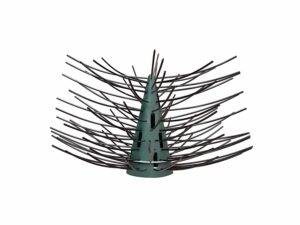
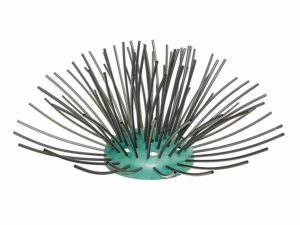
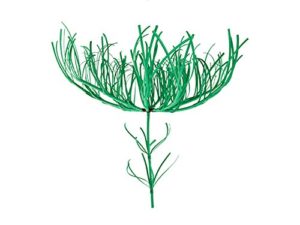
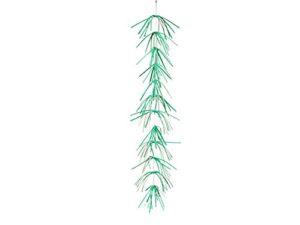
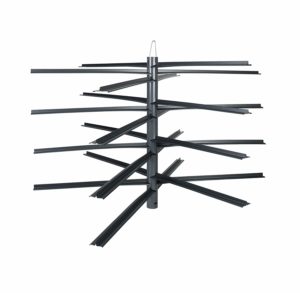
Top 5 Best Fish habitats in 2019
1Pond King Tree — Best Tree-like Habitat
A typical artificial fish habitat. You don’t have to accumulate rubble or grass. It’s a ready-to-use habitat. It is perfect for peaceful fish, and less so for predators. You can place it from 6 to 10 feet deep. Because of the low depth, it can make the underwater terrain unsafe for people, so never put it somewhere you’re wading, or people may be swimming.
The habitat is actually designed to keep predator fish away from the peaceful fish. But it’s definitely going to be attracted to it, and that means you’ll have your chance to get that trophy big fish.
You don’t need a boat to get this fish attractor installed. Just toss it from the shore into the water.
The “trunk” has plenty of space for the fish to hide in.
- Ready-to-use
- Perfect for peaceful fish
- You don’t need a boat to get this fish attractor installed
- Can make the underwater terrain unsafe for people, so never put it somewhere you're wading, or people may be swimming
2Pond King Shrub — Shallowest Shelter
This habitat surpasses any natural or self-made habitat. It’s just a lure, a giant bait to attract all the fish.
It’s not reliable, though, so might have to be extra careful. Don’t let this beauty fall apart the moment you apply some pressure. I advise gluing the tubes in so that they hold a little bit better.
Other than that, it’s great. This fish attractor is a perfect place for fish to nest, and it’s made for shallow water, up to 4 feet. It also features hiding chambers for smaller fish.
It’s clearly visible even when you’re ashore, so you get an added bonus of watching the fish.
- A perfect place for fish to nest
- Clearly visible even when you’re ashore
- Not strong
3Pond King Canopy — Most Natural Looking
What to do with this one? Just install it, and it’s going to be a-ok.
A perfectly natural-looking habitat, even though the fish won’t care too much. It can offer a durable and safe hideout to many species of fish. And it also protects the fish from nets and other barbaric methods, so there’s that. However, there’s only one limb it touches the bottom with, so it may be caught and dragged.
It also looks good and makes a pretty decent underwater attraction. It is made for depths of 15 feet and more.
- Natural-looking habitat
- Durable and safe hideout
- Protects the fish from nets and other barbaric methods
- Looks good and makes a pretty decent underwater attraction
- There’s only one limb it touches the bottom with
4Pond King Dock Dropper — Best Habitat for Deep Water
If you don’t have a water area that you control, then fish attractor is not for you. After all, you need to suspend it somewhere, and that means you need to have some underwater structure ready for that.
But if you can pull it off, you won’t be disappointed.
The attractor is made for deep placement, no less than 15 feet. After all, the habitat is 20 feet high. On the plus side, it’s bound to attract all sorts of fish. It’s best to buy it in bulk and use it for growing and attracting fish en masse. It’s excellent for growing fish.
- Bound to attract all sorts of fish
- Great for growing fish
- You need to suspend it somewhere
5American Fish Tree — Most Durable
If you’re sick of Pond King, how about this fish habitat? It’s a little bit more intricate, but it’s still easy to install, and it’s very durable thanks to the industrial grade PVC. It’s supposed to last forever. You don’t have to use any other equipment to get it assembled. You don’t even need any sort of clips for that.
The attractor is not made from recycled plastic, and it’s great. It offers a lot of shade and, on this list, it is definitely the best fish habitat for small-time anglers. The only real disadvantage is the price.
- Industrial grade PVC
- Supposed to last forever
- You don't have to use any other equipment to get it assembled
- Not made from recycled plastic
- Offers a lot of shade
- Price
Buyer’s Guide
Every year, I can find less debris than there used to be. So what do I do? I put some artificial habitats in such a way that the fish could feel sheltered. They work immediately, as soon as they hit bottom.
The worst part of it is rolling the thing underwater from a pit to a hill at a depth of 6-9 feet or back to the shore. Other than that, the effect is fantastic. The first “tenants” who come looking for new longings are going to be the smallest fish, which you shouldn’t take, but they will attract their larger siblings.
That sounds great in theory, but how to choose the best habitat? Well, I can give you a few pointers.
Shadow
How much shadow can the habitat offer? That is the first question you should ask yourself – or the vendor. Fish love shadow and they like hiding from the sun. A good shelter should give them that.
Complex Structure
Think of them as you would think of pet fish. Every fish wants a personal castle to explore. Okay, that’s expensive, but you can do something like a smaller version. A sufficiently intertwined fish habitat. After all, fish are not known to be great architects. They won’t even notice something is amiss and something’s fishy about their new castle.
Protection
Most fish want that shelter to protect them from predators. If your fish habitat can’t do that, you won’t find an abundance of fish in it. You need to make sure that the structure won’t allow bigger fish accessing the habitat.
Size
Bigger is better does not work in this case. Bigger habitats with broad openings are meant for bigger fish. That’s great, but there’s more little fish than there is bigger fish. If you want a big habitat to attract lots of fish, make sure it just more extensive, but otherwise, it is the same as smaller habitats.
Material
Most of the artificial fish habitats are made of plastic. But you can’t just use a habitat made of any plastic and call it a day.
Usually, recycled plastic is more than fine to use in your daily life. But not in this situation. The way plastic is recycled makes it less than suitable for planting it underwater, lest you endanger marine life.
You should also remember that plastic does not disintegrate underwater, not quickly, and you will need either to choose where to place it well or remove the habitat when you’re done.
Other materials such as wood, rope, metal are not as stable, and you don’t have to worry about them too much. Biodegrade materials are going to give very soon, metals will hold longer, but they also well be rusted away, unless they are rust resistant. Personally, I don’t think there is a point in using rust-proof materials, they should be able to disintegrate, and I hope you think so, too.
Artificial Habitat Tips
Depth
Putting the artificial debris in the deepest place you can find is not always suitable for fish. It is best to position them near the shore, at a medium depth, preferably near the area where it is found most often but is challenging to catch.
Erosion
A DIY habitat made of wood is going to erode, as they tend to be short-lived. You will have to build new ones, and that is not an easy job, you need to put there lost of branches and driftwood to attract more fish.
You can also buy a ready-made device made of metal that does not erode quite as fast as wood.
Attracting the Fish to the Habitat
An artificial habitat is attractive to fish as it is. However, that doesn’t really matter if the fish never runs into it. Habitats are entirely suitable as a shelter, but they are not edible and have no scent that would draw fish from all over the lake.
What do you do in a situation like that? Why, use barley, of course. It’s better than not using it, and it’s better than using barley without a fish habitat available. On the plus side, you won’t overfeed the fish, because all you need is to draw the fish to your artificial debris, and then most of them are going to stay.
Why waste time for a potentially big game to find your habitat or find your treat and linger around when you can combine them and take control. I recommend using something like quickly and fully water-soluble corn granules.
The trick is that the mentioned corn granules have an odor and disintegrate into “edible” slime, but the fish are not going to be sated at all. That’s going to create an illusion of food being near and thus provoking an urge to seek it, moving around actively. Usually, they will find the habitat and stay there. And why wouldn’t they? They’ve just found a new “reliable” shelter as a result of the search for food.
Misconceptions
It’s Contributing to Pollution!
No, it’s being a conscientious angler. To begin with, you can always remove the habitat when you no longer need it, if that’s what you think is the right thing to do. You will be able to use it somewhere else later that way. But if there’s little to no navigation in the area and you don’t need the fish attractor elsewhere, I recommend that you leave it be. The fish need shelters, and you’ve just provided them one.
If you live somewhere where poaching is a concern, the poachers are going to return empty-handed, since artificial habitats are hard on drift nets. You may have to check the area out for ghost nets from time to time.
Questions and Answers
Yes. In fact, artificial habitats have been used for a long time industrially to attract fish to the places where the fish is harvested, especially in the marine environment. To achieve the same result, you need to either work hard to make one or buy a ready-made one.
Not only is an artificial shelter capable of attracting more fish, but it also doesn’t need bait to do so. With an artificial habitat nearby, fish have no reason to hide somewhere else nearby. That means, if the fish have already come, it’s not going anywhere from your portable “algae,” even if you give them no burley. Not only do you save on burley, however little it costs, but the fish are also going to be hungry.
Fish seek shelter, and they are attracted to most artificial underwater structures, the more complex, the more so. Even if some object was not intended to rest underwater, that is not a concern for the fish.
Artificial habitats are attractive both for prey fish and for predators. Prey fish, naturally, seek shelter, and they find it. Predators are attracted by the sheer numbers of prey and linger around.
